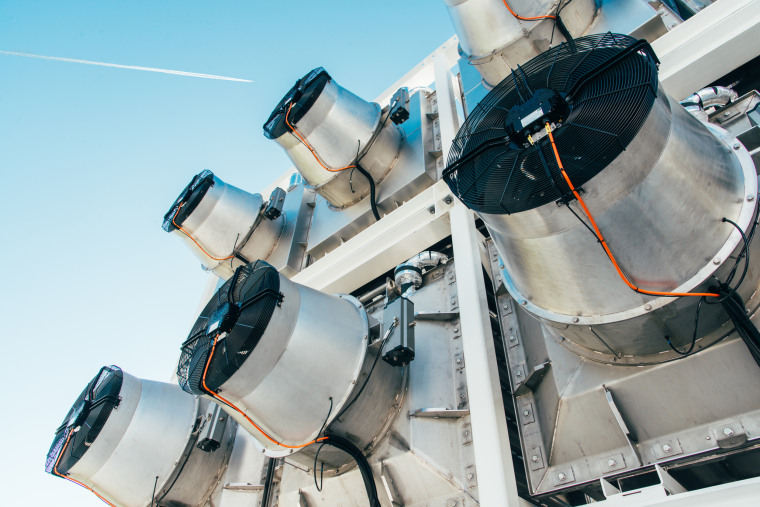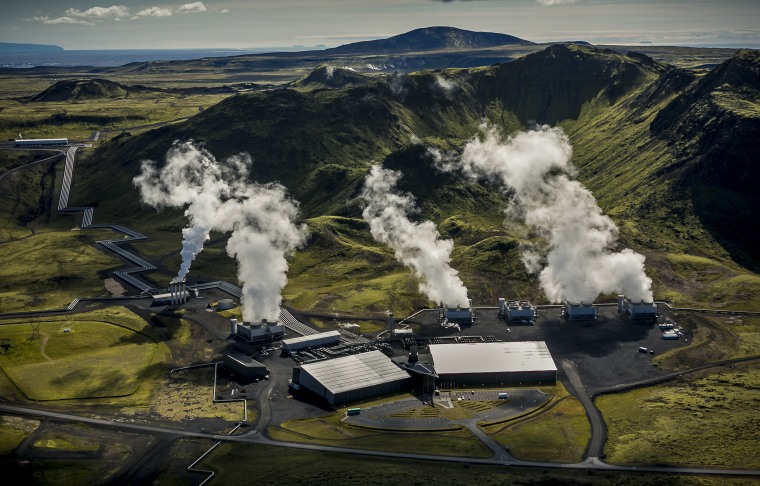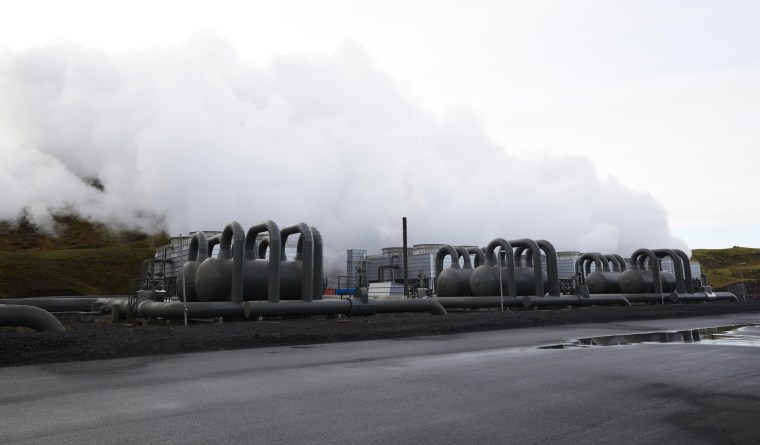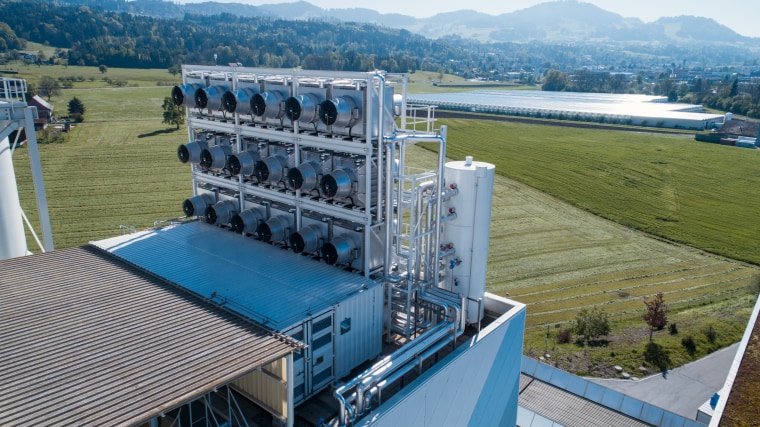We humans are really, really good at making carbon dioxide. Last year our smokestacks and tailpipes puffed out more than 60 trillion pounds of the greenhouse gas, monkeying with the planet’s climate and acidifying the oceans.
What we’re not so good at is cleaning up our mess. Most efforts at shrinking our carbon footprint have focused on cutting emissions: switching to renewable energy, for instance, and making transportation and manufacturing more efficient.
But those efforts are moving too slowly to stabilize the climate, so now engineers are also working the problem from the other side. What if we could scrub carbon dioxide out of the air, removing some of what we’ve already put out there?
Direct-air capture
Around the world, several companies are working feverishly to develop so-called “direct-air capture” technology, including New York City-based Global Thermostat, Canada-based Carbon Engineering, and a Swiss startup called Climeworks.
This year, Climeworks reached a milestone, opening the world’s first commercial-scale direct-air capture facility outside Zurich. Global Thermostat is right behind, with a research operation running now and its own commercial plant scheduled to open in Huntsville, Alabama in 2018.

Of course, capturing carbon dioxide doesn’t help much unless you also have a good place to store the stuff. The companies are making brisk progress there, too.
A Climeworks project in Iceland is pumping carbon dioxide 2,000 feet underground into a layer of basaltic (volcanic) rock, where it reacts rapidly to form carbonate mineral. Carbonate keeps the carbon locked in place and out of the atmosphere, potentially for millions of years. A 2016 study showed that the process is working more efficiently than expected, fueling optimism about its wide-scale use.

“There are many other good basaltic systems around the world, including in the U.S., which could store tens of billions of tons of carbon dioxide,” says Martin Jendrischik, a spokesman for Climeworks.
Cutting costs, scaling up
To exploit that vast potential to store excess CO2, engineers will have to find ways to reduce the cost of direct-air capture. Climeworks says it is making progress cutting the cost from $600 per ton of carbon dioxide to $100 a ton. And Graciela Chichilnisky, CEO of Global Thermostat, reports that her company can already achieve costs below $50 per ton.
“The cost is sufficiently low that it’s already profitable to ‘mine the atmosphere’ and sell CO2 for beverages, water desalination, polymers, and other industrial uses,” she says.
But capturing and storing CO2 on a global scale also require an enormous — and expensive — new infrastructure. Climeworks’ pilot plant processes a mere 900 tons of carbon dioxide a year. Soaking up just 1 percent of global carbon dioxide emissions would require 300,000 such plants, according to Jendrischik.

Chichilnisky proposes an even more ambitious approach, using a network of much larger facilities to take back almost all of the world’s carbon dioxide emissions. She estimates that it could cost $1 trillion to $2 trillion to get such a project off the ground, but then little or nothing to keep it running because of money earned from carbon sales. Carbon-capture advocates also propose widely deploying the technology at coal or natural gas power plants, sidelining CO2 before it reaches the atmosphere.
Unacceptable gamble?
Such blue-sky promises alarm some environmentalists. Christopher Field, director of Stanford University’s Woods Institute for the Environment, worries that governments and industry will use the promise of carbon removal tomorrow as an excuse to avoid the hard job of reducing emissions today.
“This is an unacceptable gamble with the planet’s future,” he says.
Yet Field is surprisingly bullish on direct-air capture, provided we do it quickly and balance it with major investments in renewable energy, efficiency, and forest protection: “To the extent that we can deploy carbon capture in the short term," he says, "we decrease the need to deploy massive amounts in the long term.”
A trillion dollars may seem like a lot, but it’s pittance compared to the likely costs of climate disruption if we don’t clean up our act.

